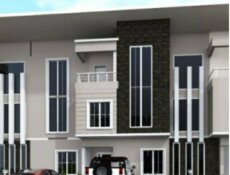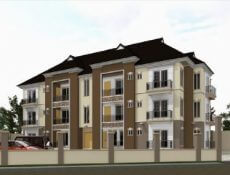Improving Building and Construction Safety
- May 5, 2017
- Articles
Real estate development is a surefire way to open up a location to development, investment opportunities, and socio economic improvement in the host communities. Real estate development in Nigeria and beyond goes hand in hand with building and construction.
When a building project is finished and commissioned, it is admired by many, with some orifices becoming the talk and toast of the town. The landlord and developer receive all the glory and praise for a job well done, and the structure is open for business, living or industrial purposes.
However, one is hardly concerned with the welfare of those who made efforts to raise the building from foundation to roof. From the masons, to the crane operators, metal, plumbing and wood technicians, these labourers put in long hours under potentially dangerous working conditions to complete building projects.
The construction sector is regarded as an accident prone industry, with 313 million non fatal accidents and a whopping 2.3 million deaths annually. These accidents take place on building and construction sites all over the world.
Studies have revealed that a large chunk of onsite accidents are as a result of non compliance with health and safety regulations, inadequate training and lack of knowledge on health, safety and risk control on construction sites.
Nigeria is no exception to this growing concern, and this stems from a number of reasons including, limited research on health and safety management, unwillingness of contractors and developers to invest in safety and welfare kits for workers, illiteracy of construction workers ,and lack of education on health, safety and risk control.
As a result of these lapses, building and construction are executed in high risk conditions, resulting in accidents onsite, and contributing to poor productivity and inefficient service delivery. It is not uncommon for building projects to be stalled due to onsite accidents, leading to huge time and money losses for the developer in the long run.
Another far reaching effect of the lack of health and safety management is that it stalls investment opportunities. There are certain health and safety requirements which developers must meet in order to access international funding for building projects. As a result of the scanty framework for health and safety management, it is difficult to access these loan facilities, and this slows down the influx of investment opportunities into the Nigerian real estate market.
The construction workers themselves suffer their fair share of the effects of poor onsite safety management. In certain cases, accidents occur due to the careless practices of the workers, but this owes largely to illiteracy, lack of knowledge and information on best health and safety practices on construction sites.
Many construction workers suffer muscular and skeletal disorders as a result of non adherence to health and safety measures. In addition to this, workers are prone to long term risks due to inhalation of toxic substances on site, which may manifest in respiratory disorders later in life.
From the foregoing, it is obvious that a complete system overhaul is needed to regulate the health and safety of construction workers and minimize the occurrence of accidents and fatalities on construction sites. Here are a few recommendations to improve health and safety management practices in Nigeria.
#1. Government Intervention
The construction site would be a much safer for place if statutory and administrative controls are put in place and enforced effectively. The National Building Code should be revised to include health and safety practices for construction workers, or a separate legislation should be passed and properly enforced to address health and safety in the construction sector.
#2. Training, Education and Certification on Health and Safety Management
Studies have shown that accidents stemming from failure to practice safety management result incurs additional costs and causes delays in service delivery and workers’ efficiency.
Property development professionals should be mandated to complete periodic health and safety management training to keep them abreast of the various means of health and safety management and risk control. Contractors should in turn educate construction workers on the safety measures, taking care to communicate to illiterate workers in an easily comprehensible manner.
In addition, real estate stakeholders are encouraged to develop and enforce safety codes and onsite practices such as the no smoking/alcohol rule, provision of reflector vests, ear muffs, safety masks, safety boots and helmets onsite.
#3. Ensure Strict Adherence to Health and Safety Rules
Building contractors and developers should ensure strict adherence to health and safety rules, taking steps to ensure workers are property kitted, observe and enforce the safety codes, and take disciplinary action against workers who neglect or disregard the health and safety rules.
#4. Prioritize Construction Workers’ Health
Building Contractors should endeavour to prioritize the healthcare, safety and welfare of their construction workers. First aid kits, stand by medical care and health insurance are extra costs borne by the developer; however, the benefits outweigh the disadvantages, as lives are saved and disasters are easily controlled.
#5. Workers Trade Union Activities
Health and Safety management practices can be effectively communicated to construction workers through their various labour and trade unions. In turn, the trade unions should serve as a mouthpiece of the individual workers, and demand better health and welfare packages at their members’ behest.
Onsite accidents are part of a global problem faced by real estate developers and construction outfits. However, it is possible to tackle these issues if joint efforts are channeled by the major players in the real estate and construction industry, as well as the workers themselves, in conjunction with the government to seek creative and progressive means to improve health and safety measures in the real estate and construction sector.





Comments are closed.